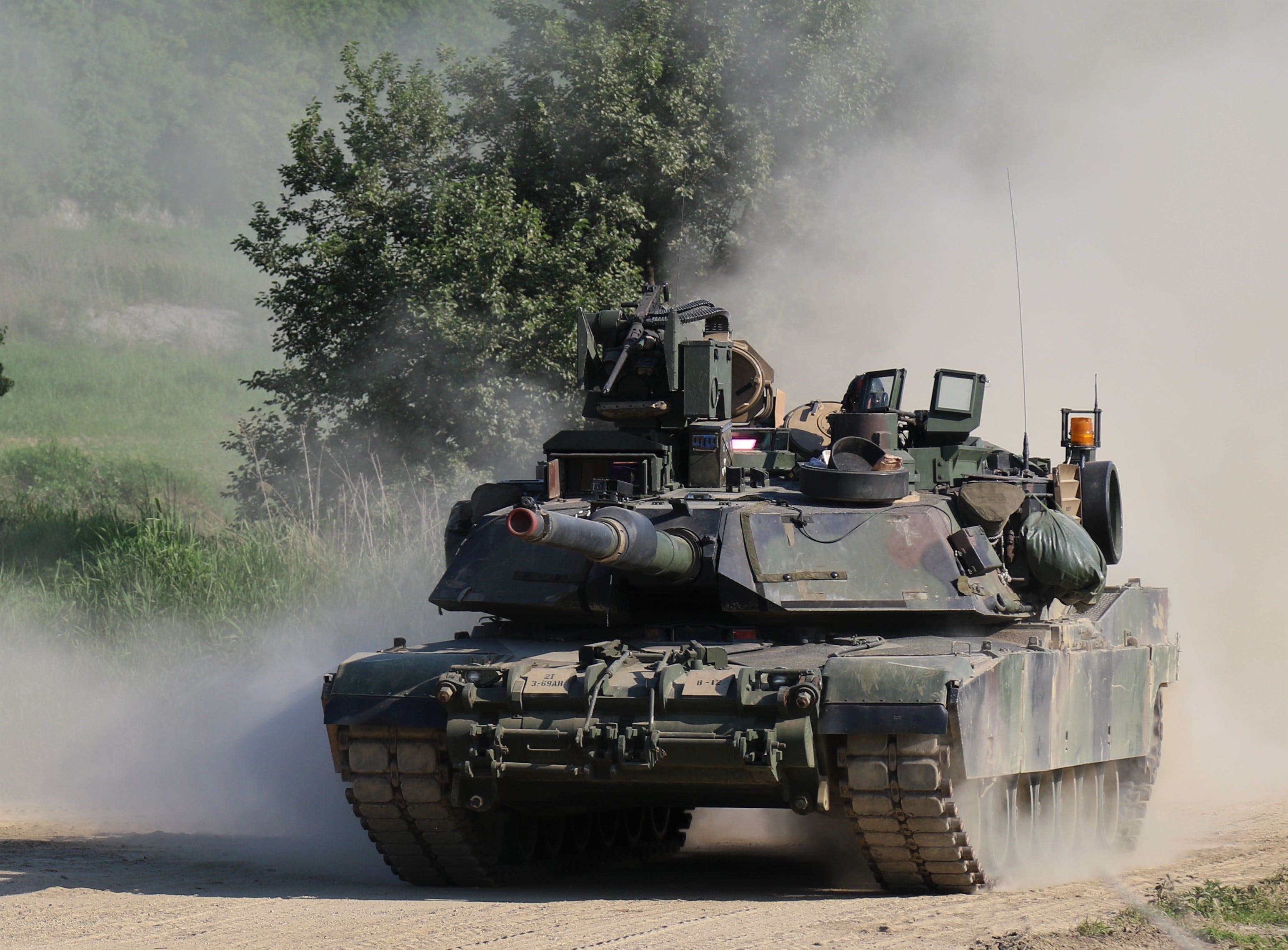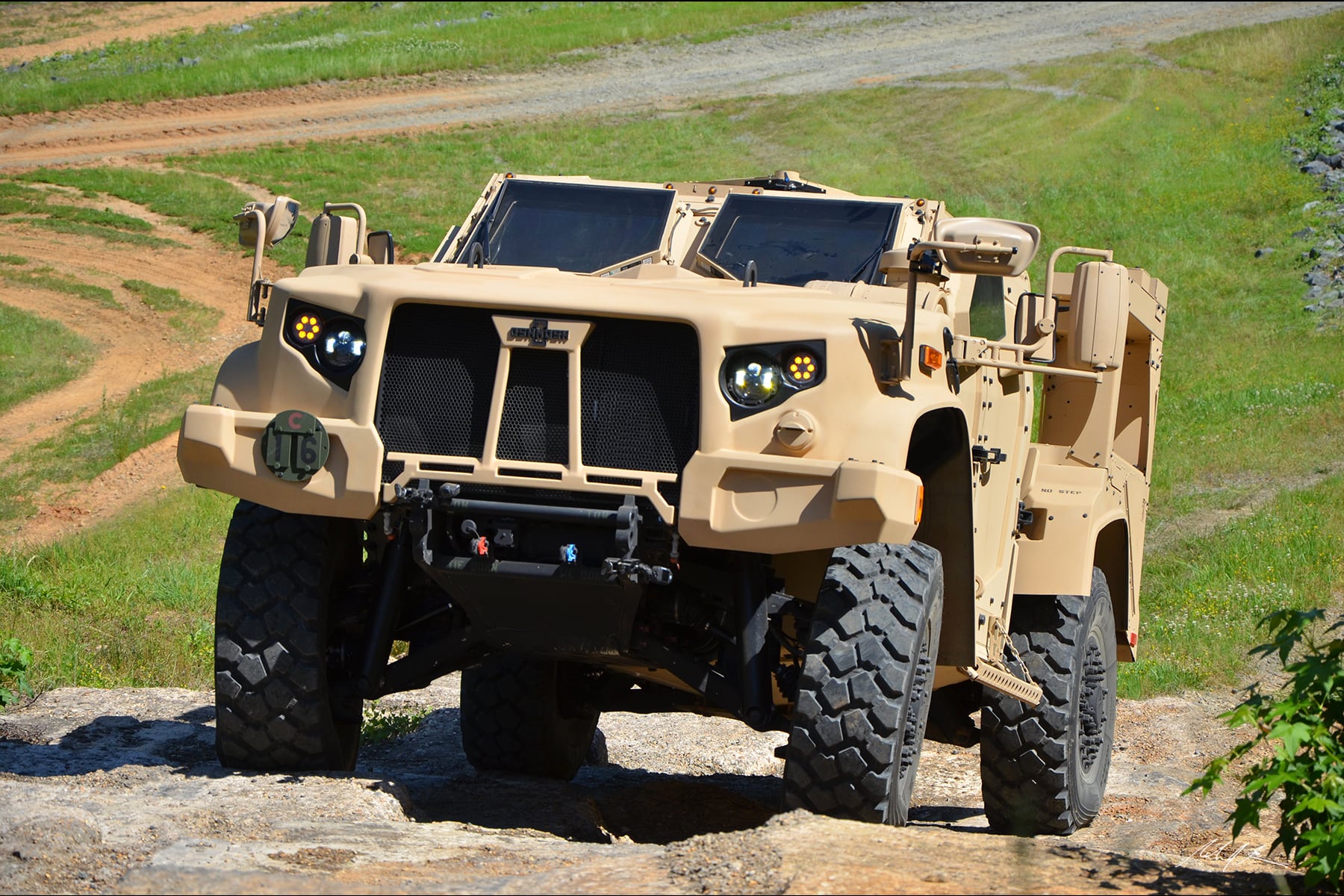The military’s newest ground vehicle has problems with its maintenance, reliability and crew situational awareness and its most heavily armed version has been deemed “not operationally effective” in a Pentagon report.
The Joint Light Tactical Vehicle has been touted as the rugged, protected and highly mobile vehicle to replace some of the more vulnerable Humvees on a contested battlefield.
The vehicle has ballistic protection equal to the mine-resistant, ambush-protected vehicles, but is one-third lighter and 70 percent faster off road than the MRAP, officials said.
RELATED

The first JLTVs were fielded to the 1st Armored Brigade Combat Team, 3rd Infantry Division at Fort Stewart, Georgia in mid-January.
Earlier last year, a number of deficiencies were noted in a recent annual report published by the Director of Operational Test and Evaluation for the Defense Department. It provides an overview of Army, Navy and Air Force programs. The Army section contains two dozen systems with reviews and recommendations.
George Mansfield, vice president and general manager of joint programs for Oshkosh Defense, provided some additional context to the report findings.
“The purpose of operational testing like MOT&E (which was completed in May 2018) is to gain direct warfighter feedback on desired vehicle improvements," Mansfield said. "This feedback has already been extensively incorporated in JLTV. We look forward to continuing to field this highly capable vehicle to our Soldiers and Marines.”
The vehicle comes in two- and four-seat versions with four basic configurations — general purpose, utility vehicle, heavy guns carrier and close combat weapons carrier.
The program plans to procure approximately 49,099 vehicles for the Army, 9,091 vehicles for the Marines, and 80 vehicles for the Air Force. That fielding will happen over the course of the next two decades for the Army and the next decade for the Marines.
All variants were deemed “not operationally suitable because of deficiencies in reliability, maintainability, training, manuals, crew situational awareness, and safety,” according to the report.
And the close combat weapons carrier was further deemed, “not operationally effective for use in combat and tactical missions.”
That was because the close combat version “provides less capability to engage threats with the (Tube-launched, Optically tracked, Wire-guided) missiles” over the Humvee.
“The missile reload process is slow and difficult for crews,” according to the report and the close combat version has “less storage space than other JLTV variants and accessing mission-essential equipment from the cargo area is a challenge,” according to the report.
Also, the crew has “poor visibility due to blind spots around the vehicle.”
The term “operationally effective” is used by testers to determine if the system can accomplish the mission it is intended to in as realistic an environment that can be tested.
“Operationally suitable” means whether the system can be placed in field use and be reliable and sustained within the unit and support available.
Crews had problems getting out of the JLTV and saw “numerous reliability failures of doors not opening impeded the ability of the soldiers and marines to safely ingress and egress the JLTV.”
And maintaining the vehicle is proving to be a challenge early in the fielding.
“Units cannot maintain the JLTV without support from the contractor field service representatives due to vehicle complexity, ineffective training, poor manuals, and challenges with troubleshooting the vehicle,” according to the report.
The reliability-specific problems included engine wiring problems, flat and damaged tires and brake system faults.
Overall, the JLTV will require more maintenance than the Humvee.
Also, none of the variants are operationally effective when using a towing trailer.
“The trailer has less mobility than the JLTV, which slowed the operational tempo of the test units. The Army has made no decision to procure the JLTV companion trailer,” according to the report.
Report authors recommended that the JLTV program develop a plan to address the report recommendations and further items mentioned in a classified annex.
Todd South has written about crime, courts, government and the military for multiple publications since 2004 and was named a 2014 Pulitzer finalist for a co-written project on witness intimidation. Todd is a Marine veteran of the Iraq War.




